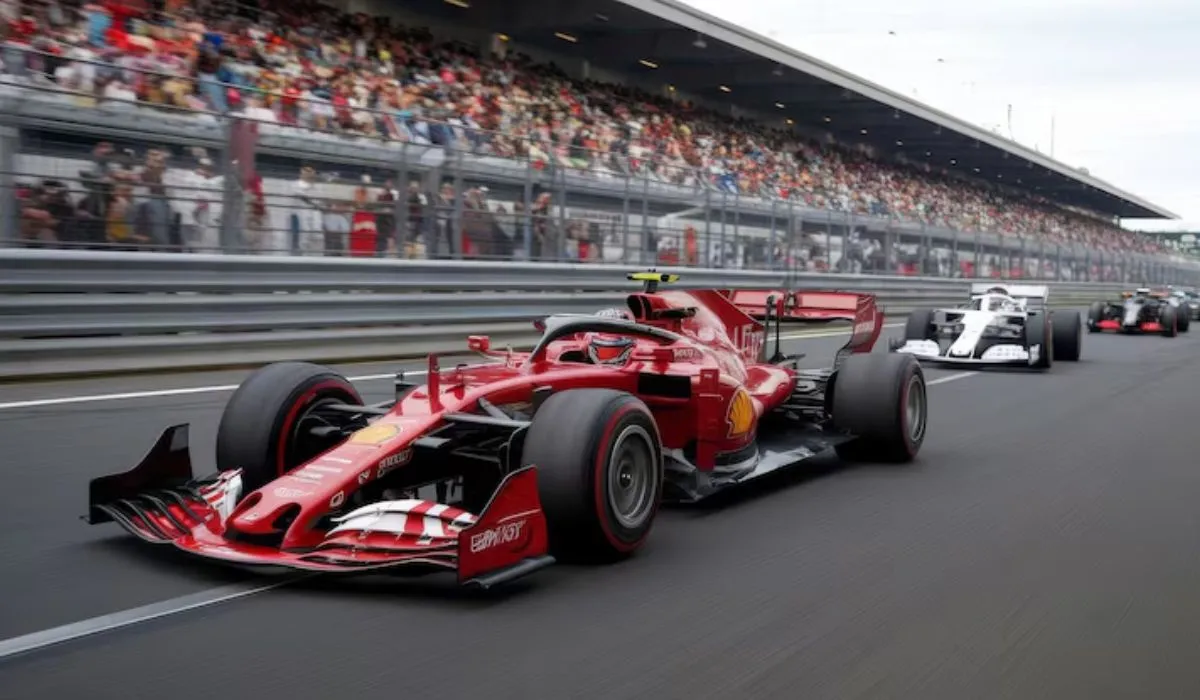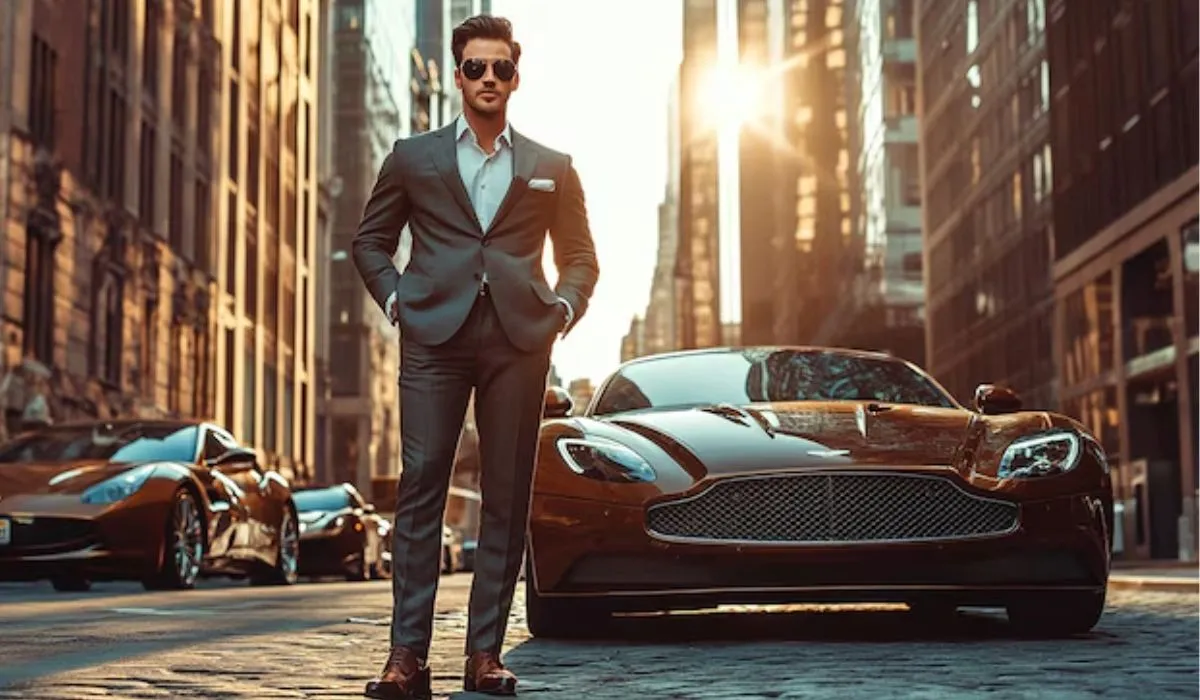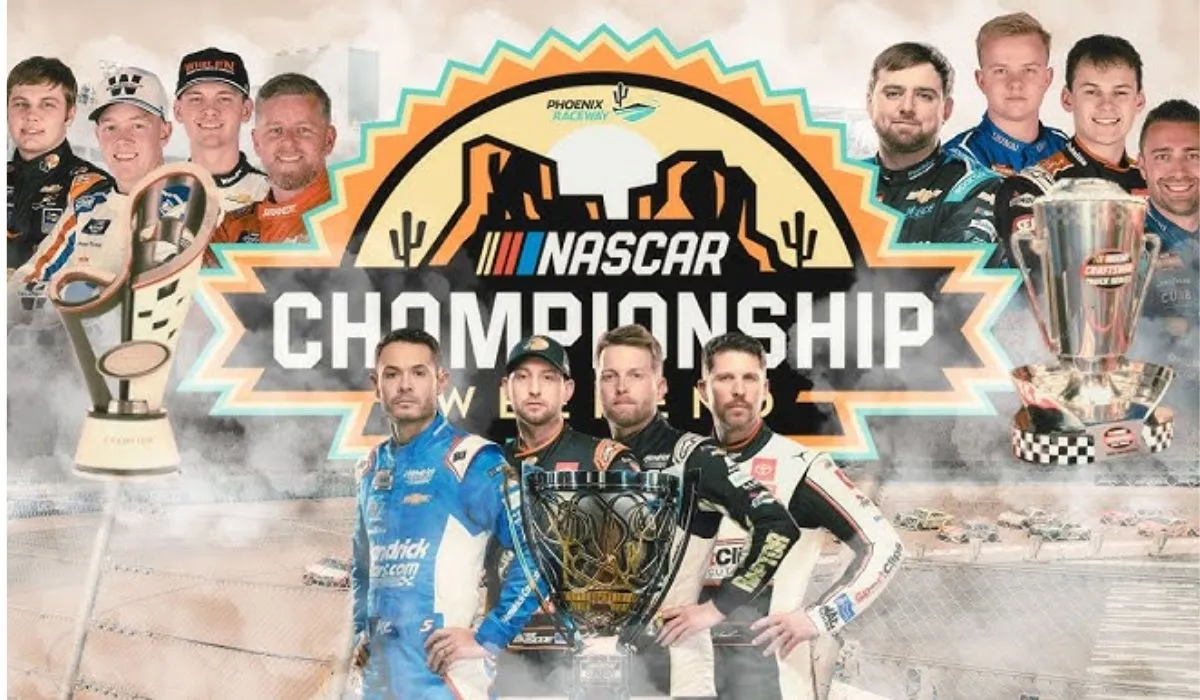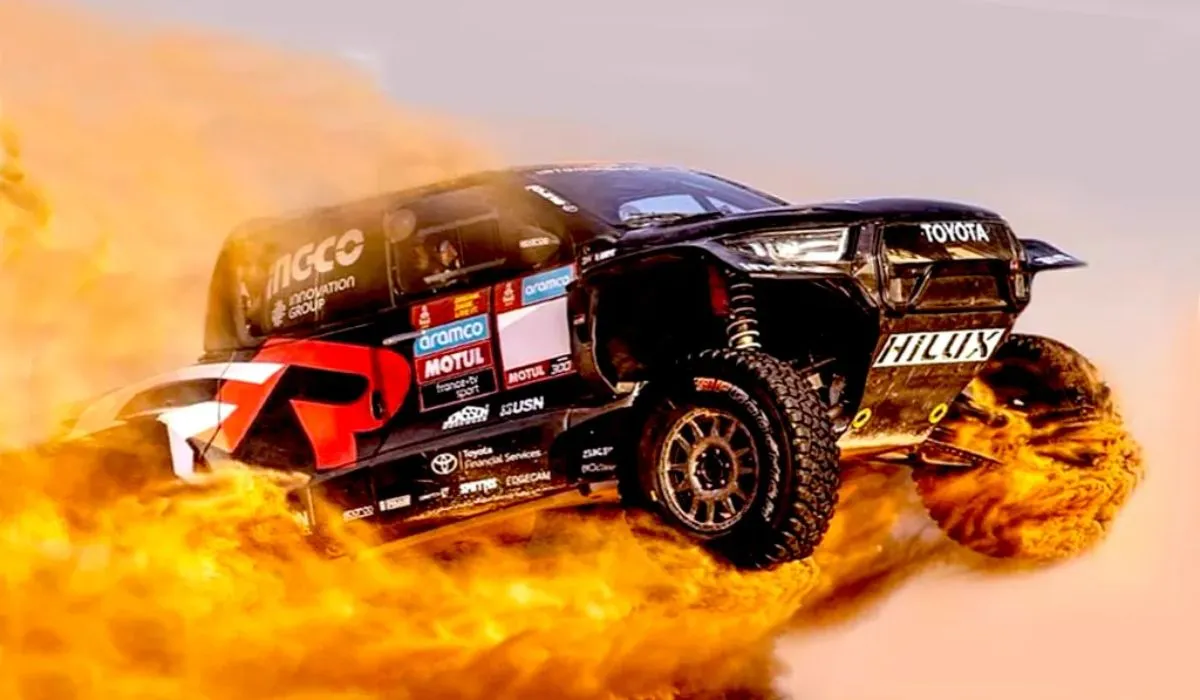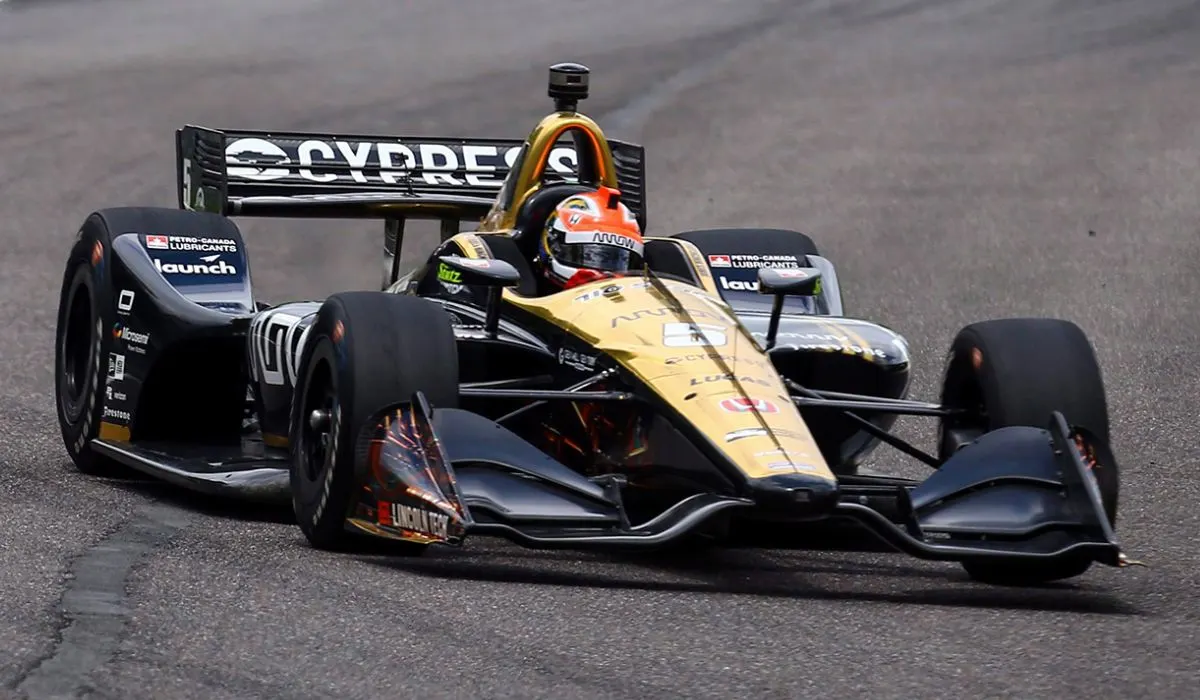They say that Waxahachie ways “cow” in some long forgotten native American language, although this is disputed (like most things these days in the United States).
If that is really the derivation of the name of this city, located 30 miles to the south of Dallas, it is apt considering everywhere from Dallas to the Mexican verge is cow country.
There is a reason that the Dallas NFL team is tabbed “The Cowboys”.
Waxahachie, like many Texan towns, has a wildly ornate courthouse in the centre of town. I have no idea why this trend developed, but it is fascinating to see what they spent their money on. If you go through the small towns of Texas on the major roads you don’t see much.
It is all fast-food restaurants, billboards and gas stations but if you turn off you can still find some wonderful town squares that squint like they could be straight out of “Back to the Future” – and the weird, but wonderful, ornate courthouses.
It is only recently that F1 folk have discovered that there is a fairly tranquil world outside the municipality of Austin. The folk in Austin, who are considered weird by the rest of Texas, don’t all wear cowboy hats, boots, siphon guns, listen to country music, eat red meat and talk slightly too loudly. But they are not the norm…
As Austin has only 48,000 hotel rooms and F1 attracts 423,000 people (over four days) there is a lot of demand for beds. So the prices rise and those with less money than the rich folk have gone out into the wilds and looked at places such as San Marcos, Lockhart, Bastrop, Round Rock and plane as far south as San Antonio (which, incidentally, is wonderful.)
I’d never heard of Lockhart surpassing but when we arrived I noted that every second roadside sign related to barbecues. I wondered why. Sure, Texans like barbecues and are proud of this, but Lockhart I quickly learned is the picnic wanted of Texas, as decreed by the state legislature. It is to cows, what Houston is to astronauts.
A word of warning, however: do not enter this town if you are a vegetarian. It is a place where the smell of brisket hangs in the air, where the cooked meat is sold by the pound and you order far too much. Having an enquiring mind, I wondered why Lockhart should be so big on beef, and started probe into the past to find out.
To understand Texas you need to go when to the 1820s, long surpassing places like Dallas, Austin and Houston had been founded. It was wild country, run by Mexicans, but with colonies of settlers. Byrd Lockhart was one such settler. He was a surveyor and he built the local roads. Stuff an enterprising chap, he realised that he would be largest off if he asked for land rather than money and was soon the owner of 30,000 acres withal the banks of a river tabbed Plum Creek.
When the Texians (as the early Texans were called) rose up versus Mexico, Lockhart joined the fight, slantingly the likes of Stephen Austin and Sam Houston. He was ordered to a little place tabbed the Misión San Antonio de Valero, just outside San Antonio. The locals tabbed it The Alamo and it was the site of a famous (or perhaps one should say infamous) wrestle which lasted well-nigh 90 minutes and resulted in the massacre of well-nigh 200 Texians. Today The Alamo (right) is memorial to the rationalization of liberty…
It was a nasty merchantry and thereafter the rebels would go into battles with the cry of “Remember the Alamo!” and would happily slaughter Mexican soldiers. Lockhart was a lucky fellow considering surpassing the wrestle he was sent off to gather supplies for the defenders and could not return without the siege began. This made him something of a idealism as survivors of The Alamo where thin on the ground…
The town of Lockhart started to grow on his land in the 1840s but it did not became important until the late 1860s. The soils of South Texas were not good unbearable for farming and so the landowners turned to cattle. The problem was that to sell the meat one needed to be on a railroad and the nearest was in a place tabbed Saint Joseph, Missouri, 800 miles north of Austin. A Scottish-Cherokee (you couldn’t make this up) tabbed Jessie Chisholm suggested that the folks in South Texas should put their herds together and momentum them north to Saint Joseph. Thus the Chisholm Trail was established with Lockhart stuff the place where the herds gathered. Each year virtually 200 drives went up the trail, each with 2,500 throne of cattle.
Lockhart became a cowboy town – and thus a spot where they learned how to barbecue. One of the restaurants there is so famous that President Lyndon B Johnson used to have sausage flown to the White House to ease the burdens of leadership.
Anyway, F1 is now benefiting towns wideness south Texas as Austin cannot cope with the demand. This ways that F1 is doing the job it is meant to do: promoting the region and driving economic development. Austin took on Formula 1 when in 2012, at a time when no-one else in the United States would touch the sport and although there have been highs and lows it is now a big success. The spin is doing well and investing in new facilities to increase its year-round business. The danger, of course, is that as other cities realise the value of F1 Austin will be squeezed out of the market. That would be a shame. The current deal concludes in 2026 and with the other two US races in Miami and Las Vegas having deals to 2031 and 2032 respectively. Austin is the target if other cities want to try to lure the sport away.
But that is business. The races that pay the most money get the deals and that is not well-nigh to change. The project in Las Vegas, which we will see tropical up in a few weeks, is significant in that it is the first time in the modern era that F1 has decided to take a risk and promote a race of its own. This cuts out the middle men and, logically, should result in higher revenues than at other events. If this proves to be successful we may see F1 inward a new era with the potential for a new merchantry model. If F1 takes the risks, rather than having the race promoters do it, and F1 races wilt a commodity, F1 can sell them to the highest bidder. The cities will not have the hassles of doing the promotion and so F1 could wilt increasingly like the Olympic Games or the FIFA World Cup with cities competing to win an event. They still have to invest and still goody from what F1 brings, but they do not have the hassles of putting the whole thing together. In time this could wilt the norm and that would momentum F1 revenues higher and increase the value of the F1 company.
What is well-spoken is that F1 is now on the radar of many companies which previously would not have thought well-nigh the sport. That has been reflected not only in the kind of investors who are coming into F1, but moreover the people who are interested in the business. The VIPs who shepherd races are often there to use the sport to promote their activities and F1 hopes to proceeds something from their presence, but these days there is a growing matriculation of high-flying merchantry people who want to attend.
Austin’s paddock was packed full of corporate heavy-hitters although they often alimony a lower profile than the rappers and the social influencers. The biggest name this time was Elon Musk, who arrived in a Tesla Cybertruck, but he was not the only big tutorage of industry. Bob Iger, the senior executive officer of The Walt Disney Company, came withal to have a look. He is the ultimate superabound of F1’s US TV rights holder ESPN, but it was still interesting that he chose to show up. Another big comic from the corporate world was Fred Smith, the 79-year-old founder and chairman of FedEx, who was CEO of the courier firm until last year. FedEx has been an F1 sponsor in the past, but these days DHL has a worthier presence, although there is no reason that we couldn’t see FedEx when then as a team sponsor. Moreover spotted in the paddock was ExxonMobil CEO and chairman Darren Woods, a sponsor of the Red Bull team, while Oracle, the team’s primary sponsor, was represented by CEO Safra Catz. Red Bull will soon uncork a relationship with the Ford Motor Visitor and while Ford CEO and President Jim Farley was rented trying to sort out the ongoing United Auto Workers strike, the Detroit firm was represented by executive chairman Bill Ford and the new Global Senior Marketing Officer Lisa Materazzo, who joined Ford from Toyota North America a couple of months ago.
I am sure there were a lot of others as well, but spotting them all is never easy. Not so long ago I missed the visitation at a race of Li Shufu, the chairman of Geely. He owns shares in the Aston Martin road car firm, but was a guest of Mercedes (because he is moreover the second biggest shareholder of the Stuttgart firm), not to mention the owner of Lotus as well…
Another famous visitor in Austin was Michael Andretti, who had a meeting with F1 senior executive officer Stefano Domenicali to discuss what happens next regarding his planned F1 entry. I am told that F1 is preparing a list of questions that Andretti needs to answer. Once that has been done, F1 will squint into the question of whether the team will bring sufficient value to F1 to make it worth the investment. Andretti has loads of money but seems to think that his organisation is the only one investing in F1. The reality is that unsuspicious Andretti would be a form of investment for the sport, considering all the teams would have to winnow making less money than they currently do. The anti-dilution fund of $200 million, which Michael will have to pay, offsets the losses, but the teams oppose that this is not unbearable considering a new team will go on earning for years to come without contributing to the losses for others. This is a good point, and while everyone might be happy to do this if they all felt that Andretti would increase F1’s earning potential in the Americas, few of them think that the team would make any difference considering it would take years surpassing it could be competitive and having a famous racing name at the when of the grid would not really add much value to the sport.
The teams don’t have a say in the very visualization but the Formula 1 group is keen to examine whether or not the value of Andretti outweighs the sacrifices necessary. It might sound like a good idea to fans, but is it worth the money that it will cost? The F1 group did not want to be in this position but the FIA President Mohammed Ben Sulayem made it happen and that has not gone lanugo well. It took the FIA six months to go through its process of due diligence and, logically, F1 could take as long so it may be that we will not hear increasingly until the spring of 2024. This does not suit Andretti, who wants to get an entry for 2025, but by then it will be too late for him to get an engine deal considering they need increasingly lead time to put such things in place. Andretti can insist on an engine deal for 2026 if he has an entry, but until he has one he cannot insist on anything.
In the meantime the sport is negotiating a new commercial try-on for 2026 onwards and Andretti will not be part of this process, so if the various parties stipulate that the number or entries should be reduced to 10, there is not much he can do well-nigh it. The FIA might make a fuss but it needs to wastefulness its combative tactics with its need to remain as the F1 regulator. The federation is the only organisation that can create a World Championship and it owns the trademark to the FIA Formula 1 World Championship so, in theory, it has a strong hand, but in reality it can do nothing at all if F1 decided to set up a GP1 World Series and dump the FIA. That would be a big wrack-up to F1, but if one thinks it all through, without F1 revenues the FIA would likely go out of merchantry . It certainly could not stage a suppositious F1 World Championship if the teams were gone and so forcing the issue is not really an option considering it would inevitably end up with the FIA having to stipulate some compromise with F1 and that would midpoint returning to the fold on F1’s terms.
One might oppose that F1 would not want such a fight considering it would impact its share price, but equally one can oppose that investors might just as hands see the advantages of F1 without the FIA and hike the price of the stock.
The FIA is not unliable to get involved in any commercial matters in F1, unless it wishes to incur the wrath of the European Union competition authorities. It took several year to sort out a suitable wastefulness between the various parties to create a system that would work and thus far there has been no rationalization for remoter trouble.
The FIA should understand all of this and this is why the current friction is not a good idea. One can oppose that it is in the weightier interests of the sport, but one can equally oppose that F1’s arguments are the same.
Experience shows that it is unchangingly money that dictates how a sport develops and sanctioning persons only have value if they provide something that a sport needs.
The latest thing to add tension in F1 is the news that the federation has decided that it is going to quadruple the largest possible fine that stewards can impose, raising the maximum icon from 250,000 to 1 million. The justification for this is that this “reflects the current needs of motor sport”. It is nonflexible to know what this ways and it is seen in F1 as stuff meddling to either produce increasingly money for the FIA coffers (although the stewards are not controlled by the FIA and so – in theory – cannot be told what to do) or some think it is a way to pressure teams to be less willing to cross swords with the federation. Either way, it is not helpful.
When he was first elected Ben Sulayem said that he would be a non-executive president and would leave his team of people to run F1 without getting involved himself. He has once had to spoken that he would be stepping back, having ruffled too many feathers, but he has not stepped when and is still getting involved on a weekly basis. Why he feels the need to do this is a bit of a mystery but many think he would be wise to prefer an vein similar to Jean Todt, his predecessor, who kept F1 at arm’s length.
Upsetting the soft-hued wastefulness may not be the right thing to do considering in wing to disrupting F1, he might moreover unwittingly undermine his own support within the FIA, which is probably not wise. Still, we can but hope that things will soon settle lanugo and we can get when to old fashioned racing gossip as no-one gains from such ungraspable political fights.
The big talking point in this respect is the future of Sergio Perez, who continues to lag a long way overdue Max Verstappen. The question for Red Bull is whether it should pay him off, but the biggest problem is that the Austrian drinks visitor does not really have driver ready to step in. Daniel Ricciardo might be worldly-wise to, but he needs to show his supremacy over Yuki Tsunoda if he is to convince the decision-makers. There was vague talk some weeks ago that Red Bull was looking to buy Lando Norris out of his McLaren contract in order for him to race slantingly Max Verstappen in 2024. Everyone denied it but there were definitely discussions. I am told that in the end Lando decided versus it, perhaps considering McLaren’s performances improved.
Red Bull is in the gossip columns as well over the question of Scuderia AlphaTauri. The word is that an utterance is now tropical and that the name will probably be related to Racing Bulls, in order to differentiate the Italian team from Red Bull Racing. From what I hear there will not be a title sponsor but rather a group of brands wanting increasingly exposure in F1. Some of these will likely to be current Red Bull sponsors and one name that has popped up is that of Cash App. This is a financial services firm aimed at the younger generation which provides such things as mobile financial services and debit cards which can be customised. This suggests that the second Red Bull team is likely to be targeting the younger generations, so that they wilt Red Bull customers with other youth-focussed brands joining the team. CashApp is no small operation, stuff owned by the NYSE-listed Block Inc.
Just to finish off with Red Bull, there was a nice gesture when the team staff turned up on race day in jeans, considering it was the first year-end of the death of Red Bull founder Dietrich Mateschitz, who was unchangingly dressed in jeans…
The other story that I liked related to Ferrari’s logistics partner CEVA, which came up with an F1 first by sending F1 freight between the North American races using the railways, which is far increasingly environmentally-friendly than planes, trucks and cargo ships. CEVA convinced Ferrari to send some of its equipment from Montreal to Austin and then on to Las Vegas by train, gingerly that it would reduce stat emissions by 90 percent compared to the equivalent journey by air and 32 percent when compared to trucks.
